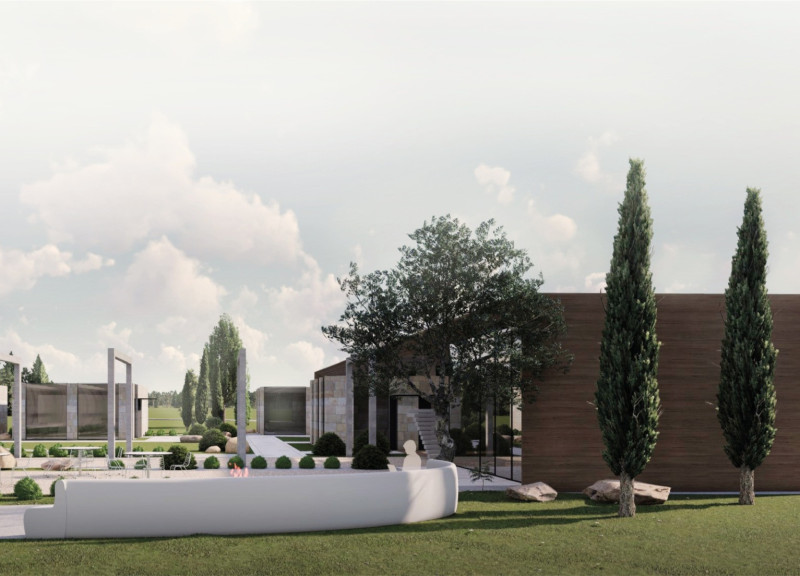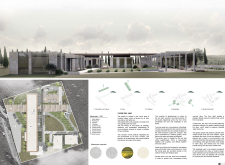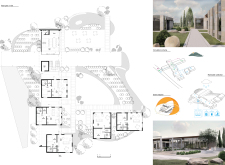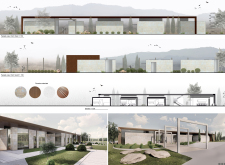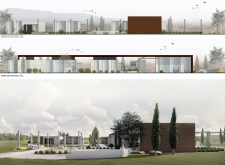5 key facts about this project
The main components of "Cuore del Vino" include a main gallery, guesthouses, a parking area, outdoor terraces, gardens, and communal spaces designed to facilitate engagement among visitors. The project is structured to optimize connections between these elements, fostering a sense of community and enhancing the overall experience.
Key architectural features include the use of local materials, such as Umbrian stone and thermo-treated wood, which contribute to the building's integration within its natural surroundings. Large expanses of glass are used to enhance transparency and light penetration, allowing visitors to maintain a visual connection with the landscape outside. This melding of natural and constructed environments is foundational to the project's design ethos.
Sustainability is a critical focus of the architectural concept. The project incorporates rainwater harvesting systems and smart orientation techniques that maximize energy efficiency while minimizing environmental impact. The design promotes the use of natural light and is carefully conditioned to provide comfort year-round, adapting to the local climate and enhancing occupant experience.
The unique approach of "Cuore del Vino" lies in its balance of tradition and modernity. It acknowledges the historical significance of winemaking in the region while introducing contemporary design elements that serve practical functions. The design process prioritizes the local context by utilizing traditional materials in innovative ways, resulting in spaces that reflect both the cultural and environmental ethos of the area.
The project also emphasizes community interaction, with open spaces and gatherings designed to encourage visitor engagement. Gardens and terraces are integrated throughout, providing areas for relaxation and socialization. This focus on communal spaces enhances the overall functionality and purpose of the project, positioning it as a welcoming environment where individuals can engage with wine culture.
For a comprehensive understanding of the architectural vision, including detailed architectural plans and sections, readers are encouraged to explore the broader design presentation. This will provide deeper insights into the architectural ideas that shaped "Cuore del Vino" and its significance within the context of contemporary architecture.


